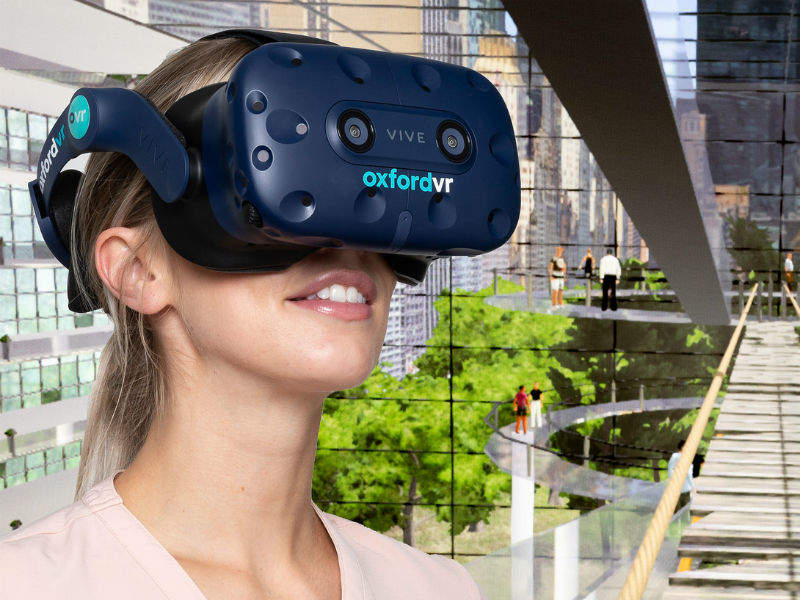
A randomised controlled trial led by an Oxford University professor has found that psychological therapy delivered by a virtual reality (VR) coach can aid the recovery of people with a clinically diagnosed fear of heights.
The study is the first to use VR as a treatment without a therapist, which could be the future of psychological interventions. Results of the study have been published in The Lancet Psychiatry journal.
A fear of heights is the most commonly reported phobia. In the new study, 100 participants with a clinically diagnosed fear of heights but not receiving therapy for it were given either the new automated VR treatment or usual care, which was typically no treatment.
Participants using VR treatment had roughly six 30-minute sessions over two weeks, in which they wore a VR headset to discuss their fear with the virtual coach. They were asked to explain their fear while the virtual coach gave basic information about the phobia.
The participants then entered a virtual office complex with ten floors and a large atrium space and took part in activities that challenged their fears and helped them understand that they were safe. Tasks included walking out over platforms, playing a xylophone near a precipice and throwing balls over the edge of a drop.
Throughout the activities the virtual coach offered encouragement, explained what the participant had learnt and asked whether they felt safer. Trying real heights between sessions was also encouraged.
How well do you really know your competitors?
Access the most comprehensive Company Profiles on the market, powered by GlobalData. Save hours of research. Gain competitive edge.

Thank you!
Your download email will arrive shortly
Not ready to buy yet? Download a free sample
We are confident about the unique quality of our Company Profiles. However, we want you to make the most beneficial decision for your business, so we offer a free sample that you can download by submitting the below form
By GlobalDataAt the end of treatment, control group participants rated their fear as remaining similar but all participants in the VR group said their fear had reduced. By follow-up, 34 of 49 people in this group no longer had a fear of heights, whereas none of the 51 people in the control group had improved. No adverse effects were reported.
University of Oxford professor and lead author of the study Daniel Freeman said: “Immersive virtual reality therapies that do not need a therapist have the potential to dramatically increase access to psychological interventions.
“We need a greater number of skilled therapists, not fewer, but to meet the large demand for mental health treatment we also require powerful technological solutions. As seen in our clinical trial, virtual reality treatments have the potential to be effective, and faster and more appealing for many patients than traditional face-to-face therapies.
“With our unique automation of therapy using virtual reality, there is the opportunity to provide really high-quality treatment to many more people at an affordable cost. Our study is an important first step, and we are carrying out clinical testing to learn whether automation of psychological treatment using virtual reality works for other mental health disorders.”
The study did have some limitations such as the researchers not comparing their technique with current psychological treatments for phobias and study participants referred themselves so may not represent all people with a height phobia.
The initial cost of software development was high but subsequent costs for the treatment were low due to not needing the presence of a therapist and the decreasing costs of consumer VR hardware.
Commenting on the treatment, one participant said: “What I’m noticing is that in day-to-day life I’m much less averse to edges, and steps, and heights, and I’m noticing in myself that when I’m doing the VR and outside I’m able to say ‘Hello’ to the edge instead of bracing against it and backing up.
“When I’m doing the VR I’m, as best as I’m able to, being open and curious around me as much as I can and noticing how the anxiety feels in my body and then noticing that it goes really quickly now. I feel as if I’m making enormous progress, and feel very happy with what I’ve gained.”
Whether virtual reality therapy such as this could be used to treat more severe mental health problems remains to be seen.



